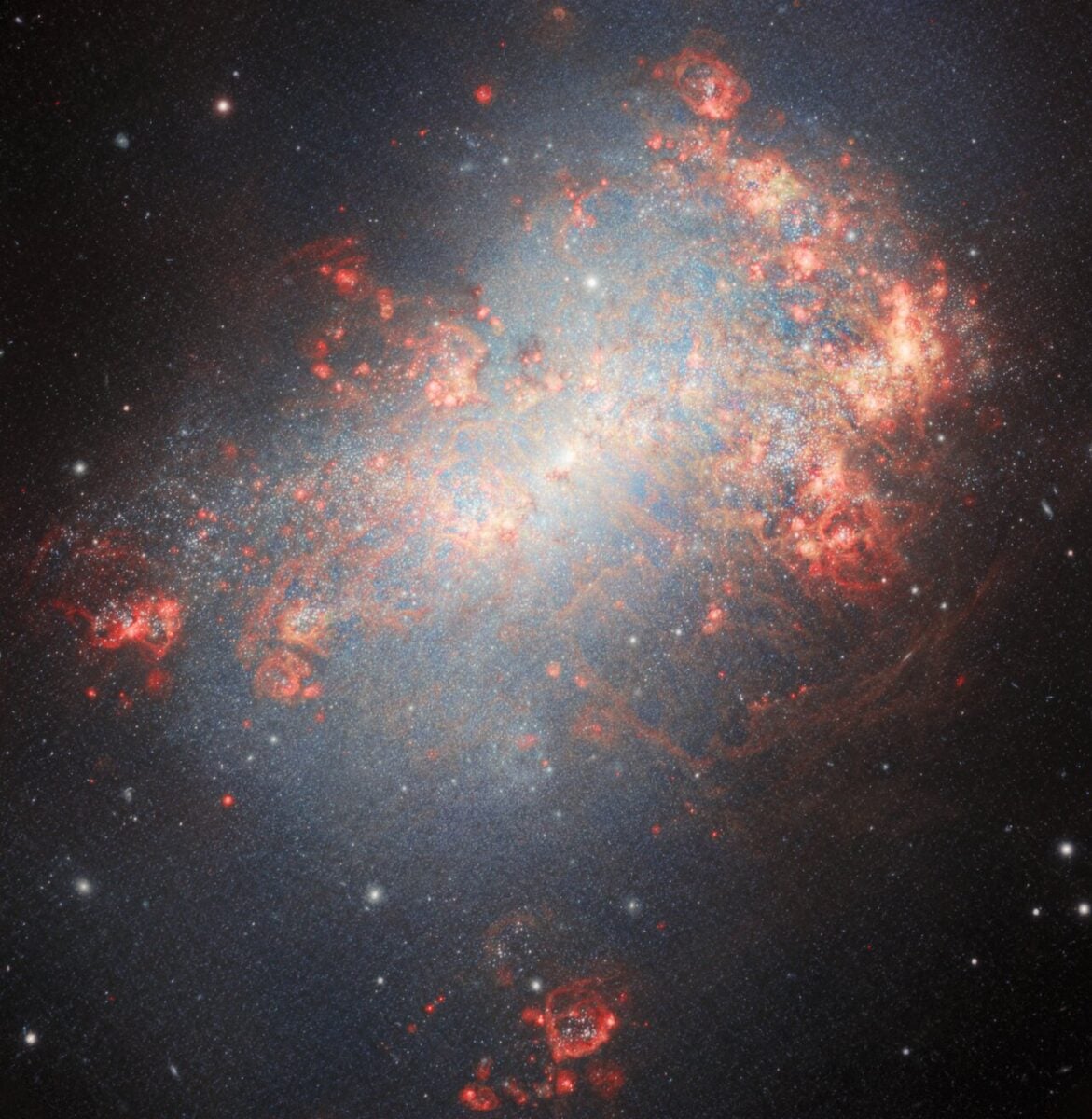The starburst galaxy is teeming with newborn stars fueled by its collision with at least two other galaxies.

NGC 4449 as seen by the Gemini North Telescope. Red regions trace where there is ionized hydrogen in the galaxy – a sign of forming stars. Credit: International Gemini Observatory/NOIRLab/NSF/AURA
On June 25, 1999, the 8.1-meter Gemini North Telescope atop Maunakea, Hawaii, revealed its first light images. Since then, the telescope has peered into the universe with its twin, the Gemini South Telescope in Chile. Consisting of both telescopes together, the International Gemini Observatory has made numerous groundbreaking images of the universe, including taking the first photo of multiple planets circling another star.
Gemini North’s latest image captured a stunning view of the irregular dwarf galaxy NGC 4449 (Caldwell 21). This galaxy, found 12.5 million light-years away in the constellation Canes Venatici, is busting with young stars. Although it has been doing so for billions of years, a recent increase in this activity is due to its interactions with at least two of its many neighboring galaxies.
NOIRLab released the image in celebration of Gemini North’s 25th anniversary.
Shining stars
Areas where stars are forming shine brightly in the image. Regions that are red show where there are vast quantities of ionized hydrogen, which is a tracer for star formation.
NGC 4449’s intense rate of star formation marks it as a starburst galaxy. Starbursts usually occur in the middle of galaxies, but NGC 4449 is an oddball. Its starburst activity occurs throughout the galaxy, as seen by the widespread baby stars.
Interactions with other galaxies close by have fueled NGC 4449’s stellar explosion. One piece of evidence of NGC 4449’s past voracious appetite is the globular star cluster in the galaxy’s outer halo. Scientists suspect the star cluster is the leftover nucleus of a satellite galaxy that is being absorbed.
At its current rate of star formation, NGC 4449’s starburst is estimated to last about another billion years.

